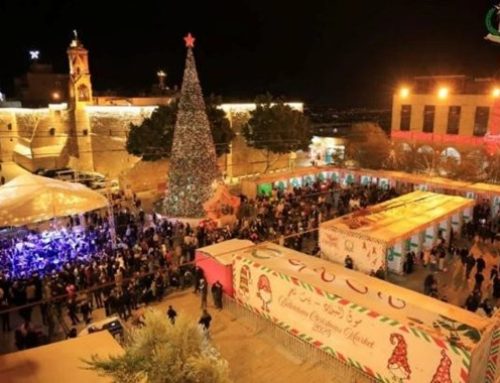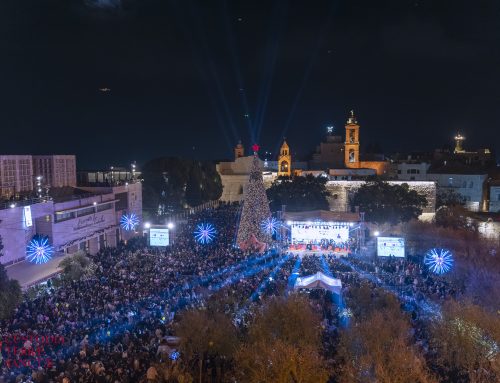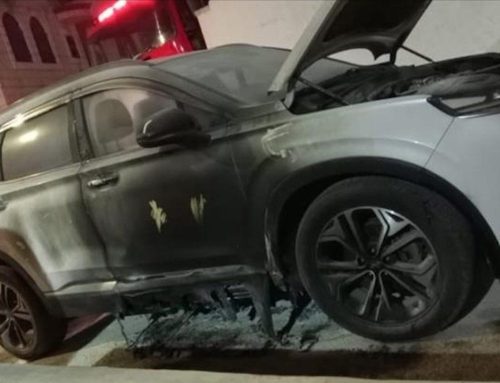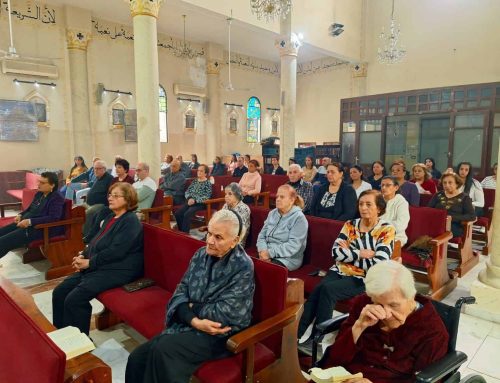After a year of relative peace, bombs have returned to pound the Gaza Strip, a patch of coastal territory washed by the Mediterranean Sea and bordering Israel and Egypt.
The Strip is 40 km long and 10 km wide and is among the most densely populated territories in the world: more than two million people live there, almost all of them Palestinians and 65% of them are under 24 years old. Six hundred thousand people live in the city of Gaza alone. This is why Israeli attacks in the Strip always cause numerous casualties and extensive destruction of houses, hospitals, schools and shops.

But why can’t Gaza find peace? And why is it called ‘the largest open-air prison’?
To understand today’s Gaza, it is necessary to go back to May 1948, soon after the proclamation of the State of Israel.
In an attempt to block the birth of Israel, the armies of Egypt, Jordan and Syria invaded Palestine. Egyptian state governed the Gaza Strip from 1948 until 1967, when it was occupied by the state of Israel after the Six-Day War. The Gaza Strip is the realm of Hamas, the Palestinian political and paramilitary Islamic movement that emerged in the aftermath of the first Intifada (1987-1993).
Hamas has radical positions on the relationship between Israel and the Gaza Strip between which violence regularly breaks out. Bombs and attacks cause victims on both sides of the border.
This situation has made the Gaza Strip a symbol of the difficulty for peace between the two peoples.
In 2005, Israeli Prime Minister Ariel Sharon ordered the removal of the 21 settlements and the evacuation of all Israeli settlers and soldiers in the Strip. In the 2006 elections, Hamas inflicted a crushing defeat on Yasser Arafat’s secular and moderate al-Fatah party. Hamas’ victory is due to the proximity of its members to the exhausted population. Their strategy is to offer food, medical check-ups, school supplies and education in exchange for loyalty to the party considered terrorist by Israel and the United States.
Hamas suicide bombers had sown death and fear during the Second Intifada (2000-2005) in Israeli cities, but the first attacks date back to 1994, the year the Arab countries claimed the Gaza Strip as part of the future State of Palestine.


Hamas’ hegemony and the long embargo
After a bloody civil war, Hamas kicked al-Fatah out of the Strip, effectively dividing Palestine into two: ‘Fatah Land’, i.e. the West Bank led by Abu Mazen’s Palestinian National Authority, and ‘Hamastan’, which ruled the Strip. Two sworn enemies.
The strong presence of the Hamas movement has increased Israel’s isolation of the Gaza Strip to the detriment of the population. Israel, in fact, has always maintained military control of the naval, land and air space of the Gaza Strip. Barbed wire and Israeli and Egyptian armies now mark the borders of the Strip.
The Israeli embargo continues to decimate the population. Nothing enters Gaza. Trade between the Strip and the world takes place through hundreds of sophisticated smuggling tunnels. Unemployment levels are very high. Living conditions are worse today than 20 years ago and about eight out of ten people survive on humanitarian aid.
In addition, the population is often without water and electricity for several hours during the day. Today, politics in both Israel and Palestine are very weak: Israel has five political elections in two years and in Palestine the last general elections were in 2005.
It is evident that political leadership and vision is lacking, while economic disparities are growing between Israelis and Palestinians.


The words of Archbishop Pierbattista Pizzaballa
His Excellency Arch. Pierbattista Pizzaballa brought the testimony of the Catholic community of the Gaza Strip to this year’s Rimini Meeting. His words help us get to know a small but fundamental reality, a living testimony of faith for all Gazawis: “I want to bring the testimony of my small community in Gaza.
A few hundred people in the midst of a sea of two million who have every right to feel oppressed for so many reasons.
Yet, it is a community active in so many social, charitable, activities for the poor, disabled, and I have never heard from them, who would have every right, a single word of resentment or anger towards anyone.
Always active in doing something for the others. Especially for the poor, they who are already poor who go out of their way for simple things, like bringing refrigerators into houses that are hovels made of sheet metal or shoes for children. They are trifles, drops in an ocean, but evidence of a community that is not turned in on itself, that wants to do something for others, that bets for the future even there in Gaza where everyone says there is no future.
And this is a great consolation. Above all, it was beautiful to hear from these young people who are working hard to say that the most important thing for them is not to bring shoes, or the refrigerator, but to give their time to these people and to listen to them.
This says the style in which this community operates. The testimony of Ghada, for example, who says that she wants justice and freedom for her people, but asks the Lord every day for the power of forgiveness. These are not taken for granted testimonies for those who live in a situation of severe poverty and oppression’.


Story of the Butterfly Children
Pro Terra Sancta is active in the Gaza Strip to help Christian families by assisting the Holy Family Catholic Parish in Gaza City, passionately leaded by father Gabriel Romanelli.
In addition to the distribution of food, medicine and educational expenses for the children, the Association has been involved in the care and shelter of Butterfly Children since November 2020. These are children suffering from E.B. ‘Epidermolysis bullosa’, a serious and rare disease caused by hereditary factors that makes the infant’s skin as fragile as a butterfly’s wings. A hug or a caress causes suffering comparable to third-degree burns. Contact is their greatest fear.
Today, the project is the only concrete answer for children with B.E. in the Gaza Strip and is structured around the expertise of young Ishaq. The parish priest of the Gaza parish, Father Gabriel Romanelli, has also made office space available to better organise the project. On the Gaza parish priest, do not miss the episode of our podcast “Voci di Terra Santa” (in Italian).
Children suffering from this incurable disease need constant medical care, physiotherapy and the purchase of specific creams, antibiotics and bandages. In severe cases, blisters can also occur inside the body, such as in the mouth or in the membranes lining the stomach. But the embargo makes it very difficult to get medicines in and the permits Israel issues often arrive late or not at all
Sometimes someone manages to get in with a special permit and brings medicine even for the butterfly children.
The blisters on the children’s bodies itch, but they cannot scratch themselves otherwise the blisters will burst and cause excruciating pain.
Taking a hot bath would greatly alleviate the sores, but clean water here is too precious and cannot be wasted.
Butterfly children cannot go to overcrowded places, such as schools, to avoid falling or being bumped into.
Today there are about 60 children in Gaza suffering from Boil Epidermolysis and the number is constantly increasing.

In the land symbolic of the struggle between Palestine and Israel, the survival of the poorest is constantly threatened, day and night.
Veronica Brocca | proterrasancta.org






